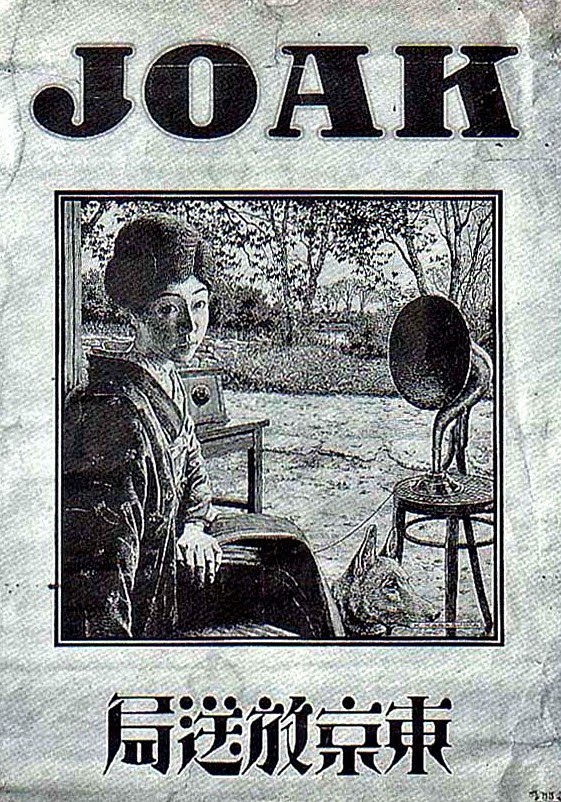 |
| (Arcane Radio Trivia) |
On two previous occasions here in Wavescan, we have presented the story of the BBC Far East Relay Station; at its first location in Tsang Tsui Hong Kong and then at its subsequent location in Nakhon Sawan Thailand. The Hong Kong station was on the air from 1987 - 1997, and the Thailand station was on the air from 1996 until the very end of last year (2016).
However, during this same era, not so well known is the fact that the BBC was on the air also from a high powered shortwave relay station in Japan. That is the story here in this edition of the international DX program, Wavescan.
We go back in the pages of time to the year 1941, and that was when the Japanese government began the construction at Yamata of what was then a modern new shortwave station, almost adjacent to the older station at Nazaki. These twin shortwave stations were installed in rolling countryside some 50 miles north of Tokyo that is these days heavily built up and intensively cultivated.
The first transmitter at Yamata was a 50 kW unit that was apparently manufactured in Japan and it was taken into service on January 1, 1941. This unit was in use to beam programming in Japanese and English to North America, Europe and China. This new unit was identified on air under callsigns in the JL series, such as JLT on 6190 kHz and JLG3 on 11705 kHz.
At the time when the Pacific War began (December 7, 1941), the programming of Radio Tokyo in Japanese and English was on the air from five shortwave transmitters located at Nazaki and Yamata, two at 20 kW and three at 50 kW. At Yamata, it would appear that there was just the one transmitter at 50 kW with the JL callsigns, though there may possibly have been one additional transmitter at 20 kW also.
Towards the end of the Pacific War, probably early in the year 1945, some of the electronic equipment in each of the shortwave stations in Japan was removed and hidden for safety in a country location. However, at both Nazaki and Yamata, there was still sufficient equipment remaining in service to keep the stations on the air.
In August 1945, Yamata was taken over by Allied Military Forces and it was used for both international communication as well for the broadcast of programming in Japanese and English. Initially, there was just one shortwave transmitter on the air at Yamata and this was a single 5 kW unit.
When the station was on the air on 7257.5 kHz with a relay of programming in Japanese from mediumwave JOAK, the shortwave callsign was JKC; but when it was on the air on 9605 kHz with a relay of English programming from the American AFRS station WVTR, the shortwave callsign was JKE. In 1949, the callsign for the Japanese programming was adjusted from JKC to JKH, and the callsign for the English programming was adjusted from JKE to JKL.
A new 50 kW shortwave transmitter was inaugurated at Yamata on February 1, 1952 under a new callsign series, JOA; and shortly afterwards another 50 kW was installed under the consecutive callsign JOB. Both units could be combined into 100 kW output on the same channel as needed.
Over the years, many additional transmitters have been installed at Yamata, and in 1990 for example the WRTVHB listing for Japan showed 2 @ 20 kW, 2 @ 50 kW, and 8 @ 100 kW. Ten years later, the WRTVHB list showed 3 @ 100 kW and 7 @ 300 kW. Incidentally, the official callsign for the Yamata shortwave station, which is owned these days by the commercial company KDD, is JOD, though this call is never used on air.
It was during the year 1993 that the BBC in London took out a supplementary relay from shortwave NHK-KDD at Yamata and this was in addition to the program output from the quite new 6 year old BBC relay station which was located at Tsang Tsui in the interior jungle area of Hong Kong. Initially, the BBC relay via Japan was for around four hours daily, though this was soon increased to around seven and eight hours daily. The BBC programming from Japan was beamed to China in English and Mandarin via one of their 300 kW transmitters.
When the BBC Far Eastern programming was transferred from their station in Hong Kong to their newer station at Nakhon Sawan in Thailand during the years 1996 and 1997, the BBC continued the usage of the supplementary relay service of programming from Japan. In fact three years later, the BBC relay service via Japan was increased to ten hours daily, though still in English and Mandarin to China.
The supplementary BBC relay via Yamata in Japan was terminated during the year 2007, at the end of a fifteen year jaunt. As far as is known, there are no QSL cards anywhere verifying the BBC relays via Yamata in Japan, not from the BBC nor from NHK Tokyo.
(AWR Wavescan/NWS 437)